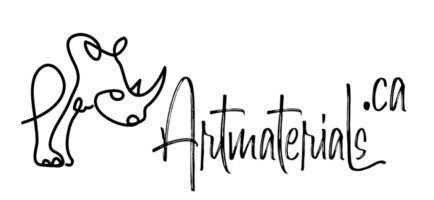Watercolour paints have much longer history than oil and, of course, acrylics. It appeared in China in the 2nd century AD, when paper was invented, because no paper no watercolour painting.
As any paint watercolours consist of pigment, binders and other ingredients. Let’s take a closer look at them.
Pigments for watercolours
Although pigments are kind of universal for many kinds of paints, not all of them work well for watercolours.
Normally, mineral pigments bind well with Arabic gum (watercolour binder), but most synthetic pigments require special attention. Synthetic pigments, such as phthalo blue and green, naphthols, quinacridones, hanza, pyrrole, benzimidazolone and others tend to be finer than their mineral cousins. With water added these pigments form lumps that very hard to break into a smooth paste. That’s why manufacturers have to add more fillers and extenders to create a reliable homogeneous paste.
Also, most synthetic pigments need a base to stick to and it’s not that easy to find information what was used as a base for a certain paint. That’s why performance may differ from brand to brand.
More information about different kinds of pigments and their use we’ll post in our News and Article section.
Watercolour Binder
Arabic gum is a traditional binder for watercolours. It’s a natural gum made from sap of certain kinds of acacia trees. Those trees are harvested in Sudan and throughout the Sahel, from Senegal to Somalia.
Arabic gum is a very safe ingredient and has a broad use in food industries. For example, bakers add it as a thickener to icing, fillings as well as to soft gums and candy. For RUSART Naturals watercolours, we buy food grade arabic gum to make sure it’s pure.
Some people think that honey is another kind of binder used for watercolours. That’s not true. Honey is a never-drying agent so watercolours based on honey will remain sticky and never form a smooth film.
However, some manufacturers do ass honey in watercolours to keep paints moist and soft. Here we come – humectants.
Humectants and Plasticizers for Watercolours
Watercolour pains based on Arabic gum only will get dry within quite short time. They will look like a piece of chalk that’s hard to use. To keep paints soft (even for watercolours in pans), we have to add humectants, such as honey, glycerine, methyl cellulose, or corn syrup.
These agents prevent paints from excessive dryness and increase flow.
Preservatives
As you can see, watercolours have a lot of natural ingredients inside that in contact with water may start growing mold. Especially that’s important for watercolours in tubes, that keep moist for longer time.
To prevent growing mold we need preservatives. Normally, manufacturers use formaldehydes or phenols to keep paints fresh. Another olden way to fight mold is using essential oils. That’s more expensive, but a safer way that we use in our RUSART watercolours.
Fillers in Watercolours
If you think that’s the least important part in the paints, you’re terribly wrong. Yes, for artists fillers is something they’d rather avoid (when possible) to keep colours clear and vibrant. However, pigments are expensive, market is competitive and only specialists or really professional artists will notice a difference. So fillers are technically the main ingredient for most student and artist grade watercolours. Professional watercolours normally have lower level of fillers.
Also, some pigments cannot been used without fillers because they don’t get the right consistence and need a base to for smooth texture. However, for most mineral pigments fillers are not necessary.
Manufactures use many chemicals as fillers. For watercolours the most common ones are dextrin (and other cheap sugars), chalk, clays, barium sulphates. Normally, these ingredients are not listed on the labels.


























